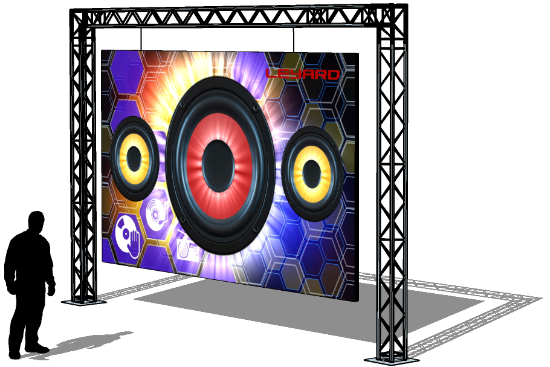Clarifying LED Wall Surface Luminance Measurements to Ideal Display Functionality
Light Emitting Diode panel panels are increasingly popular across different environments, including homes to businesses as well as communal areas. Such panels tend to be recognized due to the vivid as well as vibrant visuals, which make these suitable to conveying information, ads, and entertainment. However, comprehending brightness brightness levels for LED panel screens remains essential for ensuring optimal display efficacy. Brightness is measured using metrics called nits, which indicate the amount of light produced from the panel. A greater number of quantity in candelas, the brighter brighter the visual is. For, example, one screen boasting one thousand nits is significantly brighter than one with 500 nits, rendering it more suitable for well-lit settings.

When choosing an Light Emitting Diode wall screen, it is important to consider the setting in which the screen will be used. For well-lit illumined spaces, such as shopping malls and open-air locations, higher higher luminosity rate becomes necessary to ensure visibility. Conversely, in dimmer settings, like theaters or conference rooms, a diminished illumination rate may suffice. This is because excessive brightness within a dim setting may result in viewer discomfort among the audience, causing it more difficult for focus on the display. Therefore, comprehending specific specific needs for an setup site can aid in choosing the right illumination level for optimal visual experience.
Another crucial factor to take into account is contrast contrast proportion of an LED panel panel. This ratio measurement indicates the difference exists between the brightest most luminous white versus the darkest black black that a screen is able to produce. A higher differential proportion indicates the display can it is capable of present greater clarity as well as richness, thereby improves general visual clarity. For example, one screen boasting a differential ratio of 10,000:1 will display visuals featuring greater vivid colors and sharper details compared to a featuring a ratio at one thousand to one. Such becomes especially crucial in instances where displaying images or videos that demand high clarity and detail, including slideshows and advertising content.
Moreover, the technology technology behind Light Emitting Diode panel screens has a crucial role for the brightness and overall efficiency. Various kinds in Light Emitting Diode technologies, such as OLED as well as LCD, possess distinct traits that affect how luminosity is experienced. Organic Light Emitting Diode panels typically provide better contrast and deeper blacks, thereby may improve the visual experience within dim environments. On the other hand, traditional Light Emitting Diode screens may be better in bright environments due to the capacity to produce higher amounts in illumination. Understanding such tech-related differences can help consumers in making knowledgeable decisions according to specific specific requirements.
In conclusion, regular maintenance as well as adjustment for Light Emitting Diode panel screens can assist preserve optimal brightness as site here well as efficacy over time. Dust and dirt can build up in a full color led video walls screen, impacting its brightness as well as sharpness of the display. Periodic washing as well as professional calibration may ensure the the panel functions in top best, providing consistent image clarity. Additionally, some sophisticated Light Emitting Diode wall panels come built-in integrated features which allow users for modify brightness settings as well as hue adjustments based on individual preferences. By implementing these steps, operators can guarantee the LED LED wall screens deliver an optimal display performance, regardless of where setting where that they are placed.